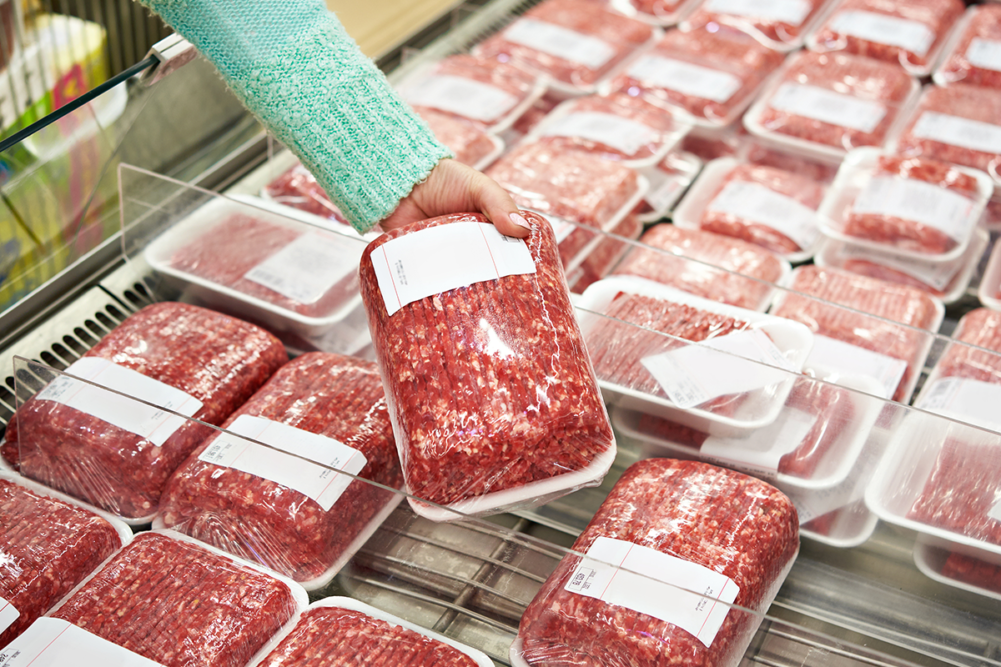What are some of the meat industry trends FMI will be keeping a close eye on in 2024?
Appearance and quality, price per pound, and total package price were the top purchase considerations for 2023. Looking forward to 2024, we’ll be paying close attention to not only purchase considerations, but also shopper strategies and trends surrounding meat purchases. Our most current research shows that 85% of meat shoppers consider at least one “better-for” attribute when buying meat, and 52% try to do their part for the environment. Other trends to watch include increases in private brands purchases, more thoughtful approaches to meat purchases and trends around changing meat and poultry purchases due to online sales. We’ll also be monitoring the integration of AI in the meat and retail industries that support efficiencies, packaging advancements, labor optimization, and the evolving preferences of today’s consumers.
How are the current inflationary pressures affecting grocery meat sales, and what will retailers and their supplier partners do next year to make sure products are at the right price points?
The meat department considered new and inventive ways to support shoppers during inflationary times, such as adaptations in packaging, species, cuts and brands of meat and poultry purchases, and importantly, teaching their customers how to save and cook new proteins. Still, value-added and fully cooked meat products continued to thrive despite economic pressures, suggesting that meat retailers and suppliers will continue to balance the cost of production against economic fluctuations, ensuring prices and convenience options remain competitive. Bottom line: assortment variety is pivotal in keeping meat on the menu and creating excitement in those categories.
Are there particular meat and poultry products, packaging solutions, merchandising ideas, etc., that FMI is excited about heading into 2024?
With increasing attention on private brands, and 63% of shoppers preferring private brands when shopping for fresh meat and poultry products, we’re curious to see what research reveals about opportunities in the private brands space in 2024. Additionally, the evolving value matrix of the grocery shopper presents a real opportunity for food retailers and suppliers — particularly in the meat industry. Sixty-two percent of meat/poultry shoppers look for products that are better for their health, and about one-third consider animal welfare, the planet and social responsibility. Four in ten meat shoppers occasionally purchased meat or poultry that feature production claims, such as organic, free range, grass-fed or locally raised. Millennials, in particular, over-index for value-added meat and poultry items. This is an opportunity for the meat industry to provide shoppers with enhanced transparency, added nutrition and health information and meal ideas and solutions while supporting the shopper’s evolving value matrix.
What are you most excited about looking ahead to AMC 2024?
We’re looking forward to the presentation of the Power of Meat 2024 report and our continued partnership with the North American Meat Institute. The research will prompt new conversations regarding labor, markets, and technology with our collective membership to enable collaboration. We’re also looking forward to the programming planned for the AMC, particularly with the discussions around applications for new technologies like generative artificial intelligence, one of the hottest topics right now across all industries. Notably, I’ll be interested in hearing updates from our members on how they’re meeting their sustainability and governance commitments as consumers become more attentive to not only price and quality, but also aligning with food products from companies that share their values. Meat is having a moment. The Power of Meat 2023 report underscored the central role of meat in Americans’ diets – and in U.S. grocery stores. According to that report, meat is the most powerful of retail fresh departments, with a whopping 98.3% household penetration and $87.1 billion in sales. Data also supports the notion that a strong meat department reputation drives traffic for the entire store. The prominence of meat in everyday meals and retail shopping carts continues even during a time of sticky inflation. Consumers may be trading down or across cuts of meat, but, by and large, have not cut it out.
Leveraging the customer journey
Midan Marketing on the right approach to shopper and social media marketing
Omnichannel marketing strategies are evolving to focus on shopper marketing. This approach involves targeting shoppers throughout their purchase journey, but particularly at the point of purchase (either in-store or online) with effective campaigns and promotions. Shopper marketing used to be tactics that a brand would work directly with a retailer to offer, but now retailers like Instacart and apps like Ibotta offer additional ways to message shoppers at the point of purchase.
The takeaway?
“Reaching customers where they are is the name of the game. And while digital advertising is leading the charge, it’s also important to keep in mind that most consumers still shop in a brick-and-mortar store.”
A recent survey of grocery shoppers revealed that 79% of consumers’ most recent grocery trip was in-store (versus 21% online). As always, it requires a deep dive into your specific customer base to determine who they are and how they shop to land on just the right mix of digital and in-person shopper marketing.
When it comes to social media, there’s been a lot of talk in recent years about the importance of utilizing influencers to help promote your brand or products.
Influencers come with a built-in audience with whom they have already established trust. Young consumers like those in Generation Z are particularly averse to traditional advertising, though, and don’t want to feel like they’re being advertised to.
To reach these shoppers, influencers are having to lean more into incorporating products into their life instead of simply showcasing the products. This is leading to a movement away from “influencers” toward “creators.”
This article is an excerpt from the February 2024 issue of Supermarket Perimeter. You can read the entire Meat Trends feature and more in the digital edition here.

